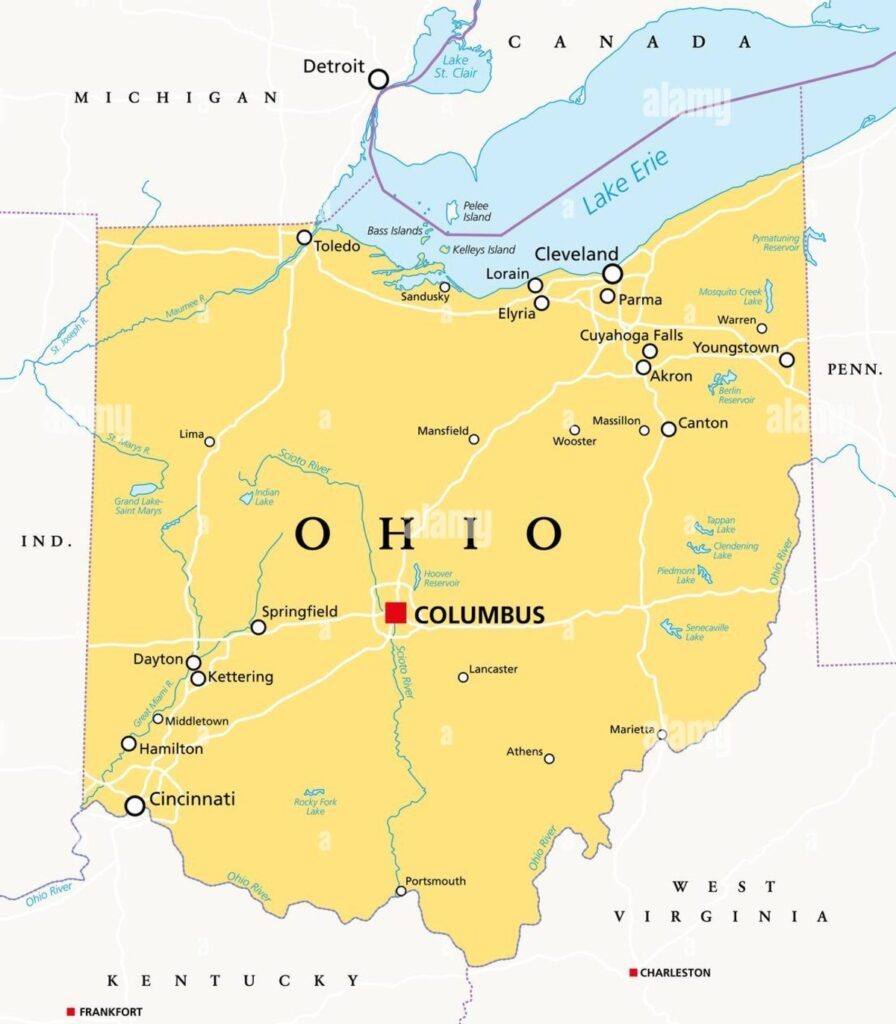A group of Ohio Republicans has introduced a bold initiative aimed at eliminating the state’s personal income tax by 2030. Through two bills in both the House and Senate, the proposal seeks to gradually reduce and eventually eradicate the income tax, alongside abolishing the commercial activity tax imposed on certain businesses. This follows recent efforts to streamline Ohio’s income tax brackets, consolidating them from three to two.

Table of Contents
ToggleMotivation Behind the Ohio’s Bold Plan to Scrap Income Tax:
The primary objective of these bills is to alleviate the financial burden on Ohio residents by eliminating the state income tax. Lawmakers aspire to position Ohio as the most business-friendly state in the nation while bolstering its financial standing.
Details of the Proposed Bills:
H.B. 33: Introduced by Rep. Adam Mathews, this bill outlines a formula for progressively lowering the income tax rate over time, with the aim of reaching a 0% rate by 2030. It also includes provisions to eliminate the Commercial Activity Tax (CAT).
Senate Bill (S.B.) introduced by Sen. Steve Huffman: This bill envisions a 10-year phase-out of Ohio’s personal income tax, with the tax rate decreasing by 10% each year until incomes are no longer taxed.
Projected Impact and Concerns:
- Enacting these bills would lead to a significant reduction in tax revenue for the state, potentially affecting funding for essential services such as education, Medicaid, mental health facilities, and development projects.
- Critics raise concerns about potential repercussions, including an increased sales tax burden or cuts to vital government services, particularly impacting lower-income individuals.
Revenue Compensation Strategies:
The state currently relies heavily on income tax revenue, contributing over $10 billion annually to the general revenue fund. The bills propose various strategies to phase out the income tax over time, coinciding with the elimination of the commercial activity tax.
Comparison with Other States:
If enacted, Ohio would join nine other states, including Florida, Nevada, and Texas, that do not levy state income taxes. These states rely on alternative revenue sources such as sales taxes, gaming, tourism, and oil.
Recovery Solutions and Balancing the Budget:
To compensate for the revenue loss, the state may need to explore alternative revenue sources or adjust spending priorities. Possible solutions include stimulating economic growth and reallocating the budget to prioritize essential services while potentially reducing non-essential spending.
Engagement with Residents and Business Leaders:
Lawmakers plan to engage residents and business leaders through town halls to gather input on the proposed legislation. This inclusive approach aims to address concerns and ensure that the plan benefits all Ohioans.
Eliminating the state income tax is a significant undertaking with both benefits and challenges. While proponents argue that it will enhance Ohio’s competitiveness and stimulate economic growth, careful consideration is needed to balance the budget and safeguard essential services. As Ohio navigates this potential transition, public input, economic analyses, and thoughtful planning will be crucial to ensure a balanced approach that benefits residents while maintaining fiscal stability.
Q&A Section
How are Ohio's income tax brackets structured under the current system?
Currently, Ohioans earning up to $100,000 annually pay a rate of 2.75%, while those above that income threshold pay 3.5%. Individuals earning less than $26,050 are exempt from state income taxes altogether.
What other tax is targeted for elimination along with the state income tax?
Along with the state income tax, the proposed plan also aims to abolish the commercial activity tax imposed on certain businesses.
How many other states in the U.S. do not have state-level personal taxes on income?
Only nine other states in the U.S. do not have state-level personal taxes on income: Alaska, Florida, Nevada, New Hampshire, South Dakota, Tennessee, Texas, Washington, and Wyoming.
What potential repercussions do critics of the proposed plan express concerns about?
Critics express concerns about potential repercussions, including an increased sales tax burden or cuts to vital government services, particularly impacting lower-income individuals.
What is the primary objective behind the proposed plan to eliminate Ohio's state income tax?
The primary objective is to position Ohio as “the most business-friendly state in the nation” and to bolster its financial standing, as stated by Sen. George Lang.

